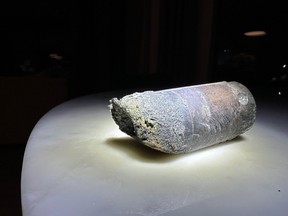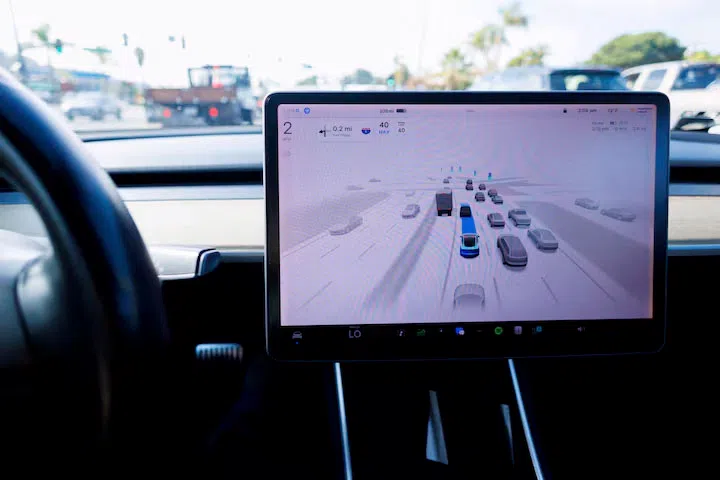Batteries jettisoned from the space station more than three years ago entered the atmosphere last month. It appears one of them hit a house
Article content
A home in Naples, Fla., got an unexpected delivery from outer space last month, when an object thought to be a discarded battery from the International Space Station smashed through the roof and two floors of the house.
The news was first reported by WINK News in nearby Fort Myers. Homeowner Alejandro Otero said he got a call from his son, who was alone in the house when the object crashed through the roof. The charred, roughly cylindrical piece of metal was about 15 centimetres long.
Article content
“It almost hit my son,” he told the station. “He was two rooms over and heard it all.” He added: “What are the chances of something landing on my house with such force to cause so much damage? I’m super grateful that nobody got hurt.”
Otero then took to the social media platform X to share images of the object, after astronomer and self-styled “orbital police” expert Jonathan McDowell tweeted about an object almost reaching Fort Myers on re-entry.
“Looks like one of those pieces missed Ft Myers and landed in my house in Naples,” Otero wrote. “Tore through the roof and went thru 2 floors. Almost [hit] my son. Can you please assist with getting NASA to connect with me?”
Advertisement 2
Article content
NASA has since said it is analyzing the object. “NASA collected an item in co-operation with the homeowner, and will analyze the object at NASA’s Kennedy Space Center in Florida as soon as possible to determine its origin,” the space agency said in a statement on Tuesday. “More information will be available once the analysis is complete.”
The European Space Agency had been tracking the re-entry of a pallet of used ISS batteries, calculating estimates for when and where the re-entry will occur.
It said nine batteries with a total weight of 2.6 tonnes had been released form the ISS on Jan. 11, 2021, and were expected to enter the atmosphere sometime on March 8. “While some parts may reach the ground, the casualty risk — the likelihood of a person being hit — is very low,” the space agency noted.
“A large space object re-enters the atmosphere in a natural way approximately once per week, with the majority of the associated fragments burning up before reaching the ground,” the ESA added. “Most spacecraft, launch vehicles and operational hardware are designed to limit the risks associated with a re-entry.”
Advertisement 3
Article content
Recommended from Editorial
While the odds of space debris falling to Earth and causing damage of this sort are incredibly rare, there are other examples over the decades. In 2003, a metal bracket from the doomed space shuttle Columbia smashed through the roof of a dentist’s office in Texas. Because it was a Saturday, the office was closed.
And in 1978, a nuclear-powered Soviet military satellite, Kosmos 954, crashed in Northern Canada. The Soviet Union paid $3 million to help with the cleanup.
More recently, residents of Southern California were treated to a show when a large piece of debris from a Chinese satellite streaked over the state early Tuesday morning. However, there were no reports of debris hitting the ground.
Determining which country is at fault for the home damage in Florida could be difficult. The batteries were owned by NASA, a U.S. government agency, but they were attached to a pallet structure launched by Japan’s space agency.
Article content






